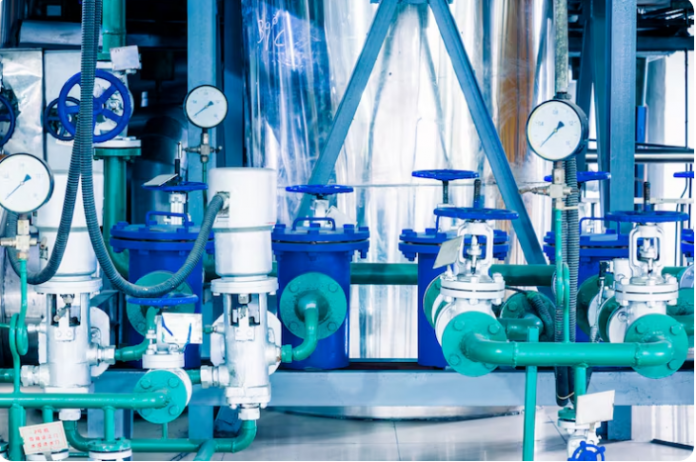Every industrial facility depends on water in some form. It might be used for cooling, heating, cleaning, processing, or even as part of the final product. Yet untreated water can create significant problems, from damaging machinery to compromising product quality. This is why water treatment products play such a vital role in keeping operations efficient, safe, and compliant.
With so many options available, it can be difficult for facility managers to know which products are most relevant to their needs. The following overview highlights the essential categories of water treatment products that every facility should be aware of, along with their practical applications and benefits.
Filtration Systems
One of the most fundamental steps in water treatment is filtration. Raw water often contains suspended solids, sand, silt, or organic matter that can clog systems and affect processes. Filtration products range from simple cartridge filters to large-scale multimedia filters, each designed to remove different particle sizes.
- Cartridge filters are compact and easy to replace, ideal for removing fine particles from smaller water streams.
- Sand and multimedia filters are better suited for larger volumes, capturing a wide range of suspended solids.
- Bag filters offer cost-effective filtration for bulkier contaminants.
Filtration products not only protect downstream equipment but also improve the clarity and consistency of water for production and cleaning.
Water Softeners
Hard water is a widespread challenge in industrial and commercial environments. High levels of calcium and magnesium ions cause limescale, which builds up in boilers, heat exchangers, and cooling systems. This reduces energy efficiency and increases maintenance costs.
Water softeners are designed to combat this issue by replacing hardness ions with sodium through an ion exchange process. The result is softened water that flows freely through equipment without causing damaging deposits. Facilities that rely heavily on steam generation or hot water systems find softeners particularly essential.
Reverse Osmosis Systems
Reverse osmosis (RO) has become one of the most widely used water purification technologies in industry. By forcing water through a semi-permeable membrane, RO systems remove dissolved salts, organics, and other impurities. The result is high-purity water suitable for a wide variety of applications.
Key advantages of RO products include:
- Consistent water quality, even when feedwater conditions fluctuate.
- Reduction in chemical dosing requirements, lowering operational costs.
- Compatibility with industries requiring stringent purity, such as food, beverage, and electronics.
RO systems are often modular, allowing facilities to scale up treatment capacity as demand grows.
Demineralisation Units
Where an even higher level of purity is required, demineralisation products come into play. Using ion exchange resins, these systems remove virtually all dissolved minerals from water, producing what is known as deionised or demineralised water.
Demineralised water is critical in sectors such as power generation, pharmaceuticals, and electronics, where even trace minerals can cause scaling, corrosion, or product defects. Although they require careful management of resins and regeneration chemicals, demineralisation units remain a cornerstone of industrial water treatment.
Disinfection Products
Microbial contamination is another risk that facilities cannot afford to ignore. Bacteria, algae, and biofilms can thrive in untreated water, leading to fouling, blockages, and potential health hazards. Disinfection products are designed to control these risks effectively.
Options include:
- UV disinfection units, which use ultraviolet light to neutralise microorganisms without adding chemicals.
- Ozone generators, which provide powerful oxidation for microbial control.
- Chemical dosing systems, which deliver chlorine or other disinfectants to keep water safe and compliant.
The choice of disinfection product depends on the nature of the process, regulatory requirements, and the facility’s environmental policies.
Monitoring and Control Equipment
Effective water treatment doesn’t end with purification—it also relies on accurate monitoring. A wide range of products are available to measure flow rates, pressure, conductivity, pH levels, and other key parameters.
- Flow meters ensure that water is moving through systems at the correct rate.
- pH meters and controllers help facilities maintain balanced water chemistry.
- Conductivity monitors provide instant feedback on dissolved solids levels, ensuring treatment performance.
By integrating monitoring equipment into their water systems, facilities can identify problems early, optimise efficiency, and avoid costly downtime.
Consumables and Spare Parts
In addition to large-scale systems, many facilities require a steady supply of consumables and spares to keep treatment processes running smoothly. Common examples include:
- Replacement filter cartridges and membranes.
- Ion exchange resins for softeners and demineralisers.
- Gaskets, seals, and housings for ongoing maintenance.
Keeping these products in stock is essential for avoiding disruptions in water treatment operations.
Supporting Sustainability and Compliance
The right water treatment products do more than protect equipment. They also help facilities meet sustainability goals and regulatory obligations. For example, filtration and RO systems can enable water recycling, reducing overall consumption. Disinfection systems ensure wastewater is safe to discharge, protecting the environment. Monitoring equipment provides data that demonstrates compliance with industry standards and environmental regulations.
As pressure mounts on industries to reduce their environmental footprint, investment in efficient and sustainable water treatment products is becoming not just advisable, but necessary.
Future Trends in Water Treatment Products
Advances in technology continue to shape the market for water treatment products. Smart sensors, remote monitoring, and automated dosing systems are increasingly common, allowing facilities to optimise treatment with minimal manual intervention. Membrane technologies are becoming more energy efficient, while new resins and filtration media are extending product lifespans.
Sustainability is also driving innovation. Products that reduce chemical use, enable water reuse, or minimise waste generation are in high demand. This trend is set to grow as industries align with environmental targets and corporate responsibility commitments.
Conclusion
From filtration systems and softeners to RO units and monitoring tools, water treatment products form the backbone of industrial operations. They protect equipment, ensure product quality, maintain compliance, and support sustainability efforts.
Every facility, regardless of its size or sector, should understand the essential products available and how they can be applied. By choosing the right combination of solutions, industries can turn water from a potential liability into a reliable and efficient resource for long-term success.
